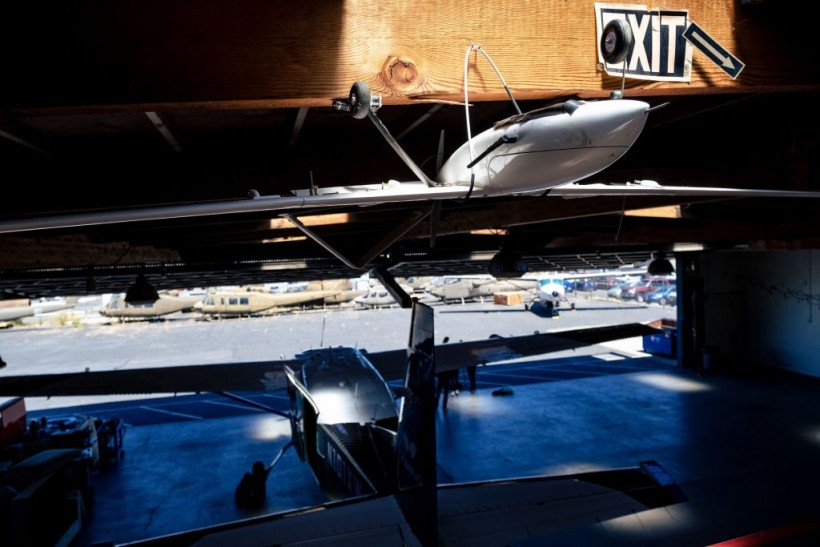NASA and Joby Aviation are now closer to integrating air taxis and other electric vertical takeoff and landing (eVTOL) vehicles into the country's major airports with the help of a new state-of-the-art air traffic simulation developed by Joby Aviation and NASA's Ames Research Center in California's Silicon Valley.
NASA and Joby Aviation researchers demonstrated the air traffic simulation to key stakeholders, including representatives from the Federal Aviation Administration (FAA) and the National Association of Air Traffic Controllers.
The simulation took place at Ames' air traffic control simulation facility, dubbed FutureFlight Central, offering a realistic 360-degree, full-scale representation of an airport environment.

The first drone used by Xwing to test autonomous flying systems is seen hanging above a Cessna 208B Grand Caravan which has been outfitted with autonomous flying equipment at Xwing headquarters in Concord, California on May 3, 2022.
Safe Integration of eVTOL Vehicles
The collaboration aims to explore the safe integration of eVTOL vehicles, including air taxis, into the national airspace. With a focus on sustainability and efficient transportation, eVTOLs are seen as a promising option for the future of urban air mobility.
Savvy Verma, an urban air mobility researcher at NASA Ames, highlighted the potential impact on people's lives, emphasizing the ability of eVTOLs to reduce travel times significantly.
Verma noted the frustration of long commutes to airports and envisioned a future where a 12-mile trip could be completed in just 15 minutes. To address the complex challenge of integrating these innovative aircraft into existing airspace, NASA and industry partners, including Joby, are working closely with the FAA.
The recent air traffic management integration simulation offers valuable data for air traffic controllers and the FAA to understand and safely plan to incorporate eVTOL operations.
During the simulation, eVTOL pilots navigated predefined routes at two major airports, Dallas-Fort Worth International Airport and Dallas Love Field Airport. The simulation considered various factors such as weather conditions, live flight data, and airport operational data.
It demonstrated the effectiveness of NASA's air traffic control procedures and airspace concepts in reducing the workload on controllers, ensuring a smooth integration of eVTOLs into airport operations.
Advanced Air Mobility
Ken Freeman, a NASA researcher, expressed confidence in the simulation's findings, saying that it validates the idea of safely integrating eVTOLs into airspace at a significant scale.
The simulation involved active and retired air traffic controllers, evaluating Joby's traffic schedules based on market analysis and future demand expectations. NASA's analysis of the simulation is ongoing, with a comprehensive report expected to be published in 2024.
The data generated from the simulation will be shared with the FAA, commercial industry stakeholders, and airports to inform the development of tools and procedures for the seamless integration of eVTOLs into airport operations.
"There is so much momentum across the world for advanced air mobility. We've been talking about integrating these kinds of vehicles into the airspace, but to be able to show it in high-fidelity simulation is very promising," Verma said in a statement.
Related Article: Joby Aviation eVTOL Test: Flights over San Fransisco Bay, Company Boasts of Longest Range for Air Taxi









